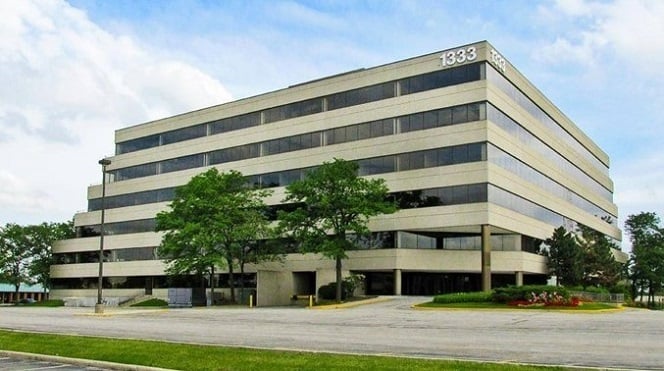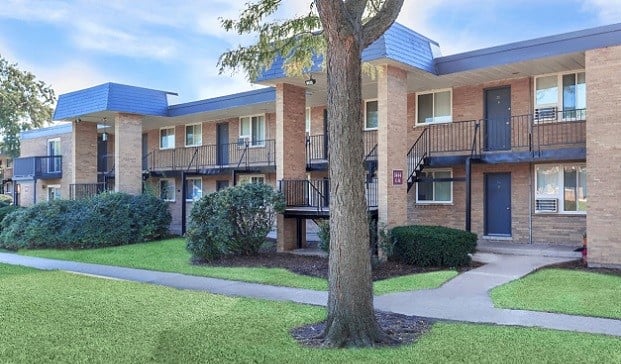
IRVINE, CA— Many multifamily properties are going beyond just providing an area for bike storage and are now offering bike-repair rooms and equipment for resident use, evidence of their owners and managers taking amenities to the next level, Western National Group's regional VP Donna Gill tells GlobeSt.com.
While the multifamily outlook remains strong, property owners are finding that they must constantly implement new amenities to stay competitive in the current multifamily landscape. For example, some property managers are taking the concept of on-site gyms a step further and are now offering fitness on-demand, bringing portable suspension equipment directly to their residents.
Since Western National is a regional property-management firm that manages 162 apartment communities totaling more than 23,600 units, we spoke with Gill to get her insights about the latest multifamily amenities that owners are offering to deepen the resident experience.
GlobeSt.com: What are some of the biggest trends in multifamily amenities you've observed so far in 2017?
Gill: An amenities arms race is underway as multifamily owners compete to attract and retain residents at their communities. Today's most popular amenities are those that take convenience and service to the next level in order to drive resident satisfaction and retention.
For example, many communities are becoming pet friendly to cater to pet-owning residents. While dog parks have been consistently popular with residents over the past several years, we are now seeing multifamily owners take this a step further by equipping their communities with full-service dog spas to accommodate grooming needs. In addition, many multifamily properties are going beyond just providing an area for bike storage, and are now offering bike repair rooms and equipment for resident use.
GlobeSt.com: How can property managers stay ahead of the curve when it comes to bringing their residents these next-level amenities?
Gill: In order to stay ahead of the competition, property managers should focus on the needs of their residents and cater to each demographic based on age, location, income and lifestyle. The amenities mentioned above might not be a fit for all communities. For example, a bike-repair room might not be a huge draw in an area that isn't bike-transit friendly, and concierge services might make more sense in large urban markets as opposed to suburban markets.
That said, property managers and owners should follow the trends closely and integrate amenities that will best serve the needs of their residents. While fitness-related amenities are nothing new, for instance, they remain one of the most important features of an apartment community. Now, we are seeing the latest trend of “fitness-on-demand” enter the multifamily market. Many communities are now offering their residents portable suspension equipment, which can be delivered directly to their apartment units.
GlobeSt.com: In what ways might the rise of on-demand, service-oriented amenities change or expand the property manager's role?
Gill: In the past several years, the multifamily sector has seen a shift toward the digitalization of property-management processes, from rent payments to maintenance requests to apartment listings. Rather than reducing the role of the property manager, however, this shift has made personalized interaction and customer service more important now than ever before.
For example, with the rise of online shopping, property managers must get creative to accommodate the volume of package deliveries at their communities. From daily needs items such as groceries to Amazon orders, property managers are now inundated with packages and must adapt to this shift in consumer preferences by creating more physical storage space for these orders.
The role of the property manager has evolved in order to support emerging changes in lifestyle preferences. Even when communities are not implementing new amenities, property managers must constantly play an active role in the day-to-day lives of residents in order to deliver quality service that will maximize resident satisfaction.
GlobeSt.com: How are different demographics driving these trends? Are you anticipating any shifts that could influence which amenities are in-demand over the next few years?
Gill: Millennials, most in their 20s to 30s, will continue to drive the multifamily market for several years to come. That said, property managers should start looking ahead, both at the changing needs of the Millennial demographic and the next generation.
Believe it or not, it is time to start paying attention to Generation Z: those born in the late 90s through 2010. Many of the Gen-Z demographic have graduated high school and are already multifamily renters. As such, it's important that owners pay attention to the demands of this generation in order to capture this renter demographic. More so than even Millennials, Gen-Zers expect technology to be fully integrated into multifamily units and common spaces.
Another trend we are seeing is a migration from urban cores to surrounding suburban markets. Multifamily residents are being priced out of expensive urban markets such as the Bay Area and relocating to the suburbs in search of affordability and better quality of life. These shifts may certainly have an impact on the types of amenities that are in demand in suburban communities.

IRVINE, CA— Many multifamily properties are going beyond just providing an area for bike storage and are now offering bike-repair rooms and equipment for resident use, evidence of their owners and managers taking amenities to the next level, Western National Group's regional VP Donna Gill tells GlobeSt.com.
While the multifamily outlook remains strong, property owners are finding that they must constantly implement new amenities to stay competitive in the current multifamily landscape. For example, some property managers are taking the concept of on-site gyms a step further and are now offering fitness on-demand, bringing portable suspension equipment directly to their residents.
Since Western National is a regional property-management firm that manages 162 apartment communities totaling more than 23,600 units, we spoke with Gill to get her insights about the latest multifamily amenities that owners are offering to deepen the resident experience.
GlobeSt.com: What are some of the biggest trends in multifamily amenities you've observed so far in 2017?
Gill: An amenities arms race is underway as multifamily owners compete to attract and retain residents at their communities. Today's most popular amenities are those that take convenience and service to the next level in order to drive resident satisfaction and retention.
For example, many communities are becoming pet friendly to cater to pet-owning residents. While dog parks have been consistently popular with residents over the past several years, we are now seeing multifamily owners take this a step further by equipping their communities with full-service dog spas to accommodate grooming needs. In addition, many multifamily properties are going beyond just providing an area for bike storage, and are now offering bike repair rooms and equipment for resident use.
GlobeSt.com: How can property managers stay ahead of the curve when it comes to bringing their residents these next-level amenities?
Gill: In order to stay ahead of the competition, property managers should focus on the needs of their residents and cater to each demographic based on age, location, income and lifestyle. The amenities mentioned above might not be a fit for all communities. For example, a bike-repair room might not be a huge draw in an area that isn't bike-transit friendly, and concierge services might make more sense in large urban markets as opposed to suburban markets.
That said, property managers and owners should follow the trends closely and integrate amenities that will best serve the needs of their residents. While fitness-related amenities are nothing new, for instance, they remain one of the most important features of an apartment community. Now, we are seeing the latest trend of “fitness-on-demand” enter the multifamily market. Many communities are now offering their residents portable suspension equipment, which can be delivered directly to their apartment units.
GlobeSt.com: In what ways might the rise of on-demand, service-oriented amenities change or expand the property manager's role?
Gill: In the past several years, the multifamily sector has seen a shift toward the digitalization of property-management processes, from rent payments to maintenance requests to apartment listings. Rather than reducing the role of the property manager, however, this shift has made personalized interaction and customer service more important now than ever before.
For example, with the rise of online shopping, property managers must get creative to accommodate the volume of package deliveries at their communities. From daily needs items such as groceries to Amazon orders, property managers are now inundated with packages and must adapt to this shift in consumer preferences by creating more physical storage space for these orders.
The role of the property manager has evolved in order to support emerging changes in lifestyle preferences. Even when communities are not implementing new amenities, property managers must constantly play an active role in the day-to-day lives of residents in order to deliver quality service that will maximize resident satisfaction.
GlobeSt.com: How are different demographics driving these trends? Are you anticipating any shifts that could influence which amenities are in-demand over the next few years?
Gill: Millennials, most in their 20s to 30s, will continue to drive the multifamily market for several years to come. That said, property managers should start looking ahead, both at the changing needs of the Millennial demographic and the next generation.
Believe it or not, it is time to start paying attention to Generation Z: those born in the late 90s through 2010. Many of the Gen-Z demographic have graduated high school and are already multifamily renters. As such, it's important that owners pay attention to the demands of this generation in order to capture this renter demographic. More so than even Millennials, Gen-Zers expect technology to be fully integrated into multifamily units and common spaces.
Another trend we are seeing is a migration from urban cores to surrounding suburban markets. Multifamily residents are being priced out of expensive urban markets such as the Bay Area and relocating to the suburbs in search of affordability and better quality of life. These shifts may certainly have an impact on the types of amenities that are in demand in suburban communities.
© 2025 ALM Global, LLC, All Rights Reserved. Request academic re-use from www.copyright.com. All other uses, submit a request to [email protected]. For more information visit Asset & Logo Licensing.





